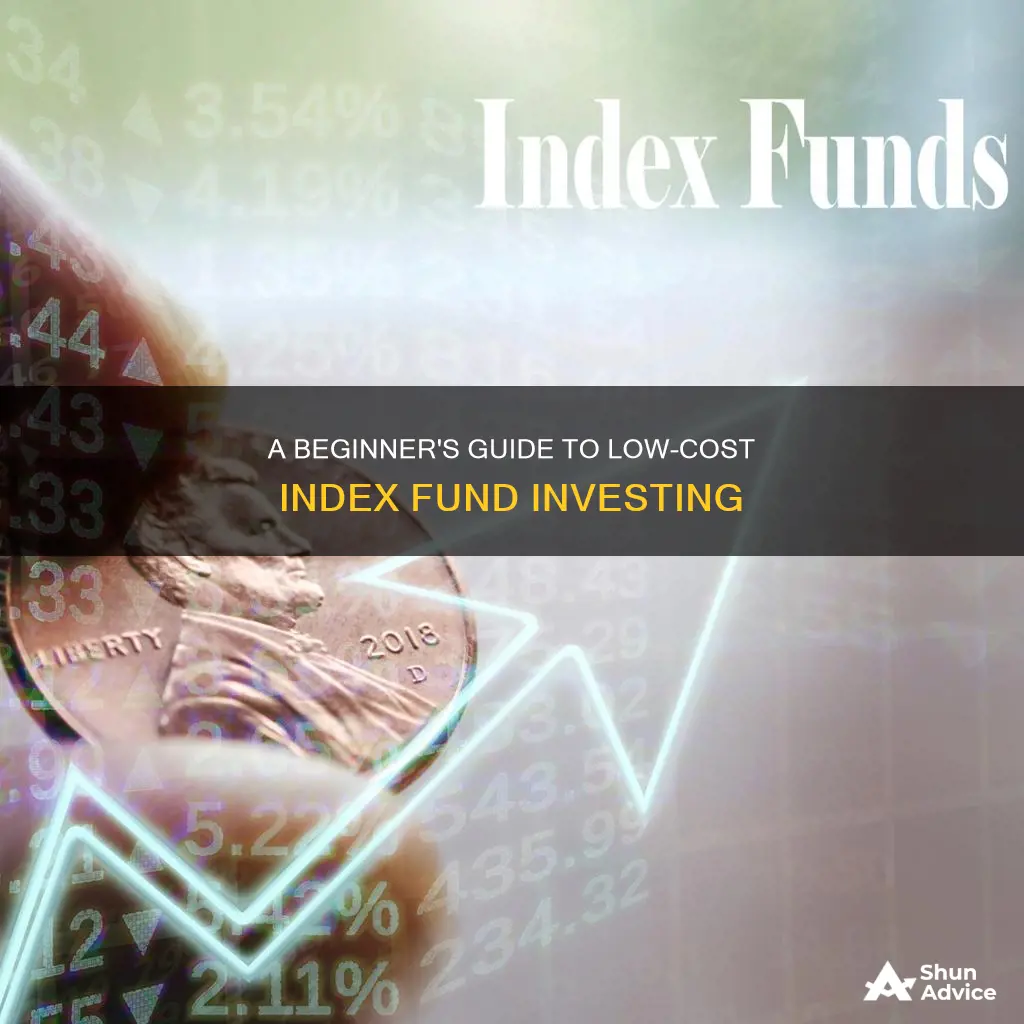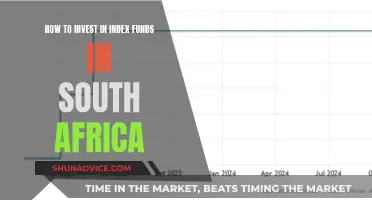
Index funds are a great way to start investing, especially for beginners. They are a type of mutual fund or exchange-traded fund (ETF) that tracks the performance of a market index, such as the S&P 500, by holding the same stocks or bonds or a representative sample of them. Index funds are considered passive investments, meaning they aim to replicate the performance of a specific market index rather than trying to beat it. This makes them a low-cost and low-risk option for investors.
1. Set clear investment goals: Determine your timeline and risk tolerance. If you have a shorter time horizon, you may want to invest more in bond index funds, while if you are investing for the long term, such as for retirement, stock index funds may be a better option.
2. Choose an investment platform: Select an online brokerage or investment platform that offers strong customer support, robust research tools, and analytical tools to help you make informed investment decisions.
3. Open and fund an account: Provide personal information, set up login credentials, and complete a questionnaire about your investment goals and risk tolerance. Then, deposit funds into your account, usually through a bank transfer.
4. Research index funds: Look into different index funds to understand their performance history, management fees, and the indexes they track. Diversifying your portfolio by investing in several index funds can help reduce risk.
5. Purchase your chosen index fund: With your account funded, buy shares of your chosen index fund through your investment platform or brokerage.
6. Monitor and adjust as needed: While index funds are typically long-term investments, it is important to periodically review your portfolio to ensure it remains aligned with your financial goals and risk tolerance.
7. Consider seeking professional advice: Consulting a financial advisor can help you select the best index funds for your portfolio based on your specific goals and risk appetite.
Remember, investing in index funds is a long-term strategy, and it's important to have a plan for regular investing and to review your investments periodically.
| Characteristics | Values |
|---|---|
| Type of fund | Mutual or exchange-traded fund (ETF) |
| Investment strategy | Passive |
| Investment objective | To mirror the performance of a designated market index, e.g. S&P 500 |
| Management style | Passive, no active trading or research team |
| Costs | Low fees, low expense ratios |
| Risk | Low, due to diversification |
| Returns | Historically, index funds have outperformed actively managed funds |
| Tax advantages | Generate less taxable income |
| Investment minimum | Varies, can be as low as $0 |
| Account minimum | Varies, can be as low as $0 |
| Where to buy | Directly from a mutual fund company or a brokerage |
What You'll Learn

Understand the benefits of index funds
Index funds are a great investment for building wealth over the long term. Here are some of the benefits of investing in low-index funds:
Low fees and low costs
Index funds are passively managed, meaning they don't have a manager actively trading and don't have a research team analyzing securities and making recommendations. This results in much lower management fees compared to other funds. Index funds also have lower transaction costs as they hold investments until the index itself changes, which doesn't happen very often.
Tax advantages
Index funds generate less taxable income as they trade in and out of securities less frequently than actively managed funds. They also have another tax advantage: because they buy new lots of securities whenever investors put money into the fund, they can choose from hundreds or thousands of lots when selling a particular security, allowing them to sell the lots with the lowest capital gains and, therefore, the lowest tax bite.
Broad diversification and low risk
Index funds provide broad market exposure and diversification across various sectors and asset classes. This lowers your overall risk and leaves you less vulnerable to losses if something bad happens to one or two companies in the index.
Strong historical performance
Over the long term, index funds have consistently outperformed other types of funds in terms of total return.
Minimal investment research required
You can rely on the index fund's portfolio manager to simply match the underlying index's performance over time, rather than having to actively select stocks.
Easy to invest in
Index funds are easy to invest in and are a great option for beginners as well as expert investors.
Exchange Traded Funds: Investing in India's Future
You may want to see also

Know the drawbacks of index funds
Index funds are a great way to build wealth over time, but they do have some drawbacks that you should be aware of before investing. Here are some of the key disadvantages of investing in index funds:
- No Downside Protection: Index funds are designed to mirror the performance of the market or a specific index. This means that if the market or index drops, your investment will be vulnerable to losses. In contrast, actively managed funds may be able to sense a market correction and adjust their portfolio to minimise losses.
- Lack of Reactive Ability: Index funds do not allow for advantageous behaviour. For example, if a stock becomes overvalued, it will carry more weight in the index, but this is when investors would typically want to lower their exposure to that stock. With an index fund, you won't be able to act on this knowledge.
- No Control Over Holdings: Index funds are set portfolios, and investors have no control over the individual holdings. This means you may end up investing in companies you don't believe in or have ill feelings towards for moral or personal reasons.
- Limited Exposure to Different Strategies: Index funds may not give you access to successful investing strategies. There are countless strategies that investors have used to generate strong returns, but by investing in an index fund, you are limited to the strategy of the fund.
- Dampened Personal Satisfaction: Investing in index funds can be less satisfying than picking individual stocks. You may still find yourself constantly checking the market's performance and worrying about the economic landscape, but you won't have the excitement of making good investments and being successful with your money.
- No Chance to Beat the Benchmark: By design, index funds aim to match the performance of the market or a specific benchmark index. This means you won't have the opportunity to outperform the market with your investments.
- Short-Term Downside Risk: Index funds can be volatile, especially during economic downturns or bear markets. When the index your fund is tracking plunges, your index fund will also take a hit.
- Lots of Different Stocks: The diversification of an index fund can be a double-edged sword. Depending on the index you choose, you may end up owning stocks you'd rather not own while missing out on others you'd prefer.
Target Date Funds: A Guide to Investing for Retirement
You may want to see also

Decide on your investment goals
Setting clear investment goals is a crucial step towards achieving financial success. Here are some detailed tips to help you decide on your investment goals:
Know What Matters to You
Before setting specific investment goals, it's important to reflect on your values and priorities. Ask yourself questions like: Do I plan to have children? When do I want to retire? By considering your life goals, you can better determine what truly matters to you and tailor your investment strategies accordingly.
Identify Your Top Goals
Everyone's goals will differ based on their unique circumstances. Identify your most important goals, whether it's buying a house, starting a family, or retiring comfortably. Prioritize these goals to guide your investment decisions effectively.
Apply the SMART Framework
Use the SMART framework to set well-defined and achievable goals:
- Specific: Make your goals clear and detailed.
- Measurable: Ensure your goals are quantifiable and trackable.
- Achievable: Set goals that are realistic and within your reach.
- Relevant: Ensure your goals align with your life and are meaningful to you.
- Time-based: Assign a timeline to each goal to create a sense of urgency and track progress.
Group Goals by Time Horizons
Categorize your goals into short-term, medium-term, and long-term horizons. Short-term goals may include a vacation or a down payment on a car, while medium-term goals could be saving for a house or wedding. Long-term goals typically involve retirement planning or saving for a child's education.
Choose Investments Aligned with Your Goals
Select investments that match the time horizon and risk profile of each goal. For short-term goals, focus on low-risk options like money market funds and high-yield savings accounts. For medium-term goals, you may be able to tolerate more risk and invest in high-quality stocks or dividend-paying stocks. For long-term goals, consider stocks as part of a diversified portfolio, including index funds that track broad market indexes like the S&P 500.
Do a Periodic Goal Check-in
Regularly review and adjust your investment goals to ensure they remain aligned with your evolving life plans. It's crucial to reassess your goals at least once a year and make necessary changes to your investment strategies.
Remember, setting clear and well-defined investment goals is a critical step in your financial journey. It helps you stay focused, disciplined, and motivated to achieve your desired outcomes.
Marketing Investment Funds: Strategies for Success
You may want to see also

Choose the right investment platform
To start investing in index funds, you will need to select an investment platform or brokerage. These platforms provide the tools and access to financial markets that allow you to buy and sell index funds. Here are some key considerations when choosing an investment platform:
- Fees and Costs: Look for platforms with low fees and commission rates for buying and selling index funds. Some platforms may offer commission-free trading on stocks and ETFs. Additionally, consider the expense ratios charged by the index funds themselves, as these can vary between funds tracking the same index.
- Fund Selection: Review the selection of index funds available on the platform. Ensure that they offer funds that align with your investment goals and strategy, such as funds tracking specific indexes like the S&P 500, Nasdaq-100, or international indexes.
- Trading Tools and Research: Consider the trading tools and research capabilities provided by the platform. Some platforms offer robust analytical tools, market research, and real-time market data to help you make informed investment decisions.
- Account Types: Determine what type of investment account you want to open. This could be a taxable brokerage account, a retirement account like an IRA or 401(k), or an education savings account. Different platforms may offer different account options, so choose one that aligns with your goals.
- Customer Support: Look for a platform that provides strong customer support to guide you through the investment process and address any issues that may arise.
- User Experience: Choose a platform with a user-friendly interface that is easy to navigate and suits your needs. Some platforms may offer additional features like automated investing, dollar-cost averaging, or the ability to set up regular purchase plans.
When selecting an investment platform, it is essential to compare multiple options and consider your specific needs and investment strategy. Taking the time to choose the right platform will help ensure a positive and successful investing experience.
A Simple Guide to Investing in the Nasdaq 100 Index Fund
You may want to see also

Research different funds
When researching different index funds, it's important to consider several factors. Here are some key things to keep in mind:
- Company size and capitalisation: Index funds can track small, medium, or large companies, also known as small-, mid-, or large-cap indexes. This affects the level of risk you are exposed to.
- Geography: You can choose funds that focus on stocks that trade on foreign exchanges or a combination of international exchanges, depending on your preference for investing in domestic or international companies.
- Business sector or industry: You can explore funds that focus on specific sectors or industries, such as consumer goods, technology, or health-related businesses. This allows you to target specific areas of the market that you believe will perform well.
- Asset type: Different funds track different asset types, such as bonds, commodities, or cash. This allows you to diversify your portfolio beyond just stocks.
- Market opportunities: Some funds focus on emerging markets or other growing sectors. These can be riskier but also offer the potential for higher returns.
Despite the array of choices, you may only need to invest in one broad stock market index fund to be properly diversified, according to investing legend Warren Buffett. However, you can easily customise your fund mix if you want additional exposure to specific markets in your portfolio. This could mean more emerging market exposure or a higher proportion of small companies or bonds.
When choosing a specific index fund, cost is a crucial factor. Index funds are cheap to run because they are automated to follow shifts in the value of an index. However, don't assume that all index funds are equally cheap. They still carry administrative costs, which are subtracted from each fund shareholder's returns as a percentage of their overall investment. Therefore, it's important to compare the expense ratios of different funds with the same investment goal, as these management costs can vary significantly.
Retirement Fund Investment: Choosing the Right Path
You may want to see also
Frequently asked questions
Some good low-cost index funds for beginners include the Vanguard 500 Index Fund Admiral Shares (VFIAX), the Vanguard Total Stock Market Index Fund Admiral Shares (VTSAX), and the iShares Core U.S. Aggregate Bond ETF (AGG).
First, you should decide on your investment goals and risk tolerance. Then, research different types of index funds and choose a fund that aligns with your goals and risk tolerance. You can invest in index funds through a brokerage account or directly with a fund provider. When you're ready to invest, make sure you have enough money to meet the minimum investment requirement, as some funds have minimums of a few thousand dollars.
Low-index funds are a great way to diversify your portfolio and invest in a broad range of stocks or bonds. They are also a low-cost option, with lower fees and expense ratios than actively managed funds. Additionally, they offer tax advantages and lower risk due to their diversification.







